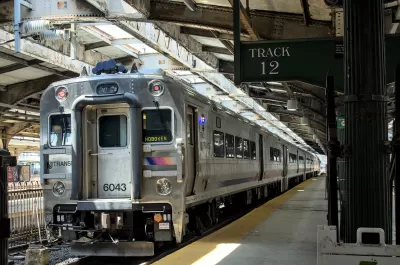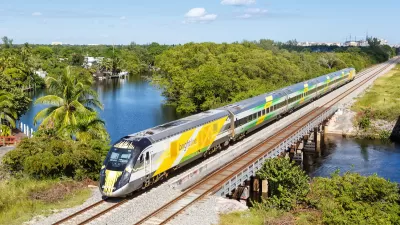The troubled agency has been canceling roughly 100 trains per week.

Writing in Curbed, Nolan Hicks takes a deep dive into New Jersey Transit’s troubled recent history, delving into the reasons why the agency has, in some cases, left passengers stranded in trains for hours — even after raising fares by 15 percent.
According to Hicks, “Two crises are unfolding simultaneously at NJ Transit.” The first, “mostly outside of NJT’s control,” is Amtrak’s failure to modernize the power grid in the Northeast Corridor, much of which NJT shares.
The second crisis is NJ Transit’s lack of resources and subsequent service cuts, with 3,400 trains canceled between January and August of this year. “Even if you subtract those that NJ Transit can pin on Amtrak, the number still stands at more than 2,300, up year-over-year by 800.”
The agency blames service interruptions on an aging fleet, but it does far less maintenance on its trains than comparable systems. Meanwhile, NJT has not added modern innovations such as elevated platforms for faster and easier boarding or electric propulsion systems that have helped systems like New York City’s MTA speed up service and reduce the time trains stop at stations. Multiple governors have promised to fund the system, only to pull back on those goals. According to Hicks, “In 2004, Trenton allocated $618 million for major projects, modernization and improvements at NJ Transit, or approximately $1 billion in today’s money. In 2024, Murphy and lawmakers allocated just $760 million for the fifth year in a row — a shortchange that adds up to $2.4 billion per decade.”
FULL STORY: Why Does NJ Transit Keep Canceling Trains?

Study: Maui’s Plan to Convert Vacation Rentals to Long-Term Housing Could Cause Nearly $1 Billion Economic Loss
The plan would reduce visitor accommodation by 25,% resulting in 1,900 jobs lost.

North Texas Transit Leaders Tout Benefits of TOD for Growing Region
At a summit focused on transit-oriented development, policymakers discussed how North Texas’ expanded light rail system can serve as a tool for economic growth.

Using Old Oil and Gas Wells for Green Energy Storage
Penn State researchers have found that repurposing abandoned oil and gas wells for geothermal-assisted compressed-air energy storage can boost efficiency, reduce environmental risks, and support clean energy and job transitions.

Private Donations Propel Early Restoration of Palisades Playground
Los Angeles has secured over $1.3 million in private funding to restore the Pacific Palisades playground months ahead of schedule, creating a modern, accessible space that supports community healing after recent wildfires.

From Blight to Benefit: Early Results From California’s Equitable Cleanup Program
The Equitable Community Revitalization Grant (ECRG) program is reshaping brownfield redevelopment by prioritizing projects in low-income and environmental justice communities, emphasizing equity, transparency, and community benefits.

Planting Relief: Tackling Las Vegas Heat One Tree at a Time
Nevada Plants, a Las Vegas-based nonprofit, is combating the city’s extreme urban heat by giving away trees to residents in underserved neighborhoods, promoting shade, sustainability, and community health.
Urban Design for Planners 1: Software Tools
This six-course series explores essential urban design concepts using open source software and equips planners with the tools they need to participate fully in the urban design process.
Planning for Universal Design
Learn the tools for implementing Universal Design in planning regulations.
Ascent Environmental
Borough of Carlisle
Institute for Housing and Urban Development Studies (IHS)
City of Grandview
Harvard GSD Executive Education
Toledo-Lucas County Plan Commissions
Salt Lake City
NYU Wagner Graduate School of Public Service





























